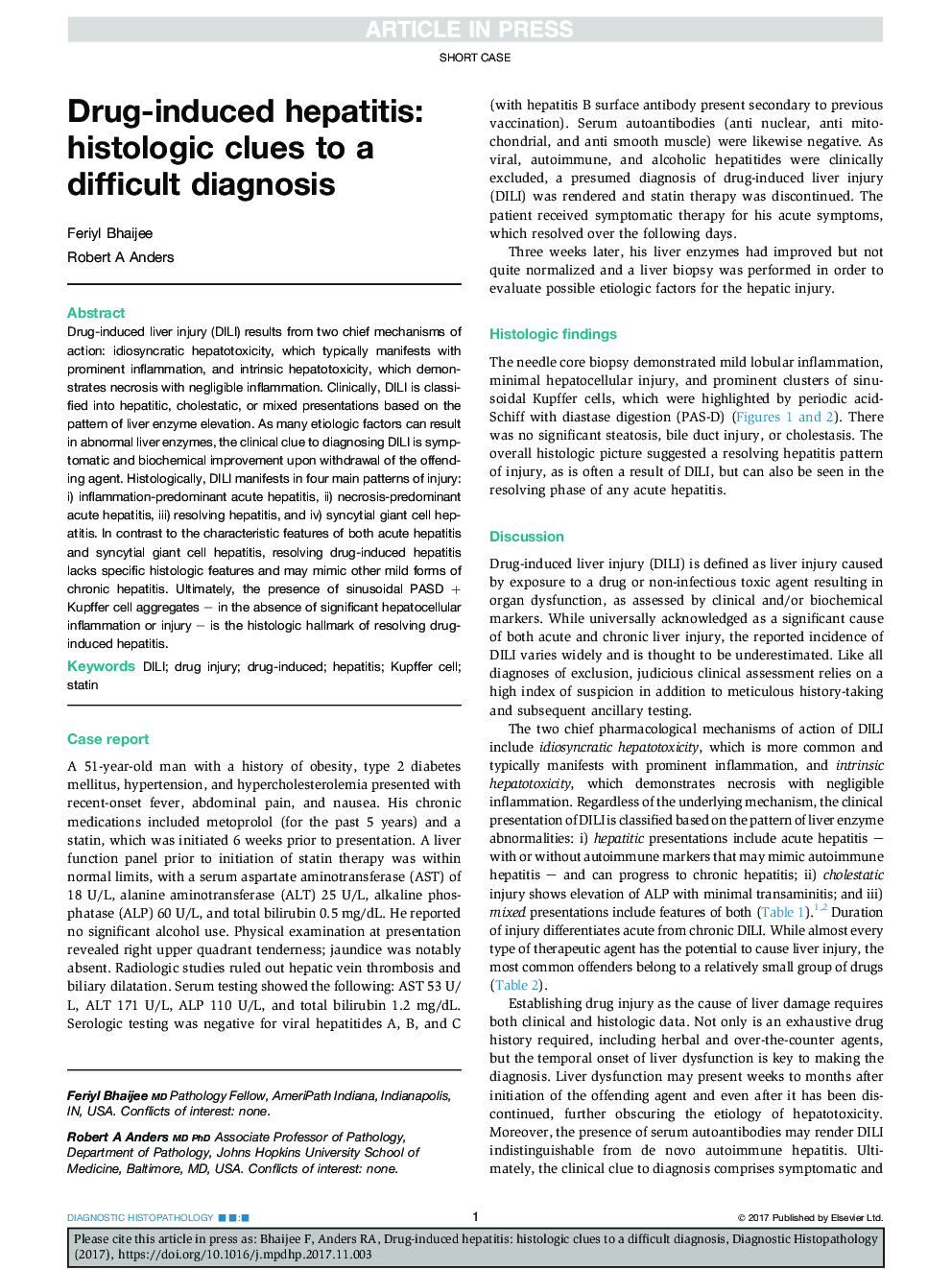| Article ID | Journal | Published Year | Pages | File Type |
|---|---|---|---|---|
| 8807339 | Diagnostic Histopathology | 2017 | 4 Pages |
Abstract
Drug-induced liver injury (DILI) results from two chief mechanisms of action: idiosyncratic hepatotoxicity, which typically manifests with prominent inflammation, and intrinsic hepatotoxicity, which demonstrates necrosis with negligible inflammation. Clinically, DILI is classified into hepatitic, cholestatic, or mixed presentations based on the pattern of liver enzyme elevation. As many etiologic factors can result in abnormal liver enzymes, the clinical clue to diagnosing DILI is symptomatic and biochemical improvement upon withdrawal of the offending agent. Histologically, DILI manifests in four main patterns of injury: i) inflammation-predominant acute hepatitis, ii) necrosis-predominant acute hepatitis, iii) resolving hepatitis, and iv) syncytial giant cell hepatitis. In contrast to the characteristic features of both acute hepatitis and syncytial giant cell hepatitis, resolving drug-induced hepatitis lacks specific histologic features and may mimic other mild forms of chronic hepatitis. Ultimately, the presence of sinusoidal PASD + Kupffer cell aggregates - in the absence of significant hepatocellular inflammation or injury - is the histologic hallmark of resolving drug-induced hepatitis.
Related Topics
Health Sciences
Medicine and Dentistry
Pathology and Medical Technology
Authors
Feriyl Bhaijee, Robert A. Anders,
